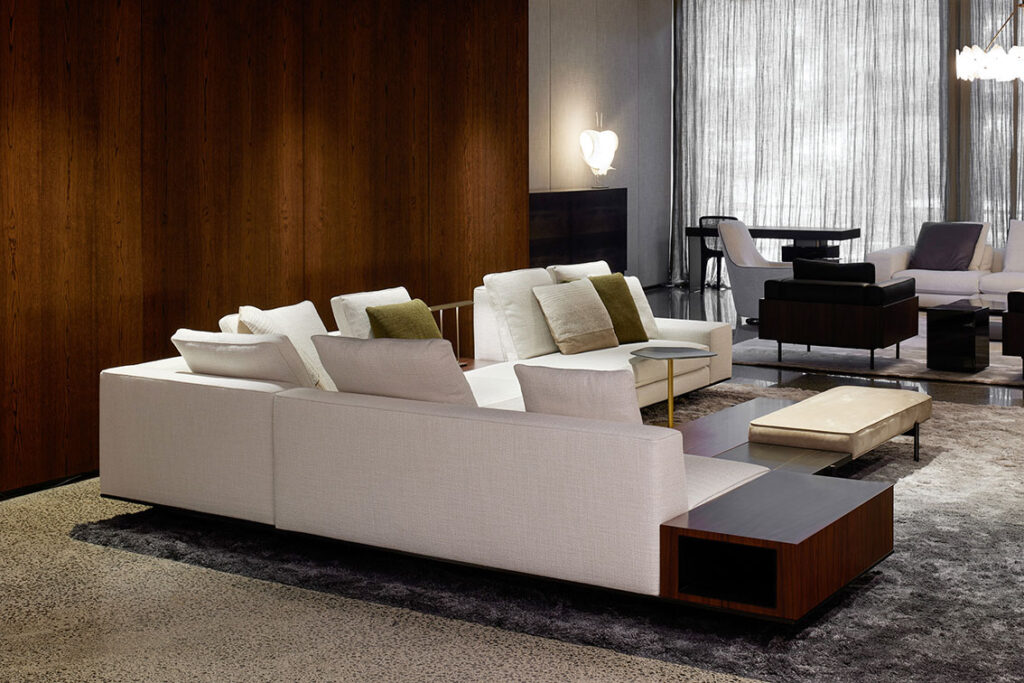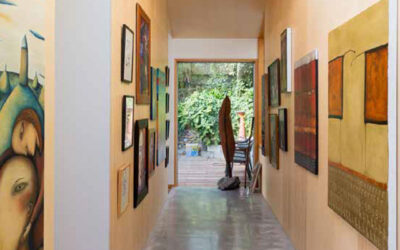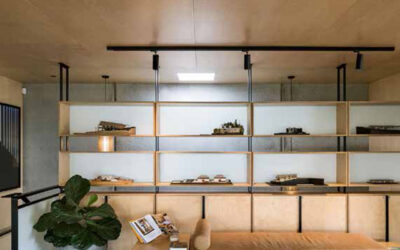When it comes to finding the best way to install interior decorative wall panels, choosing the right mounting method is a crucial decision that will impact the finish and durability. In this blog, we’ll explore both traditional and modern methods of panel mounting, helping you choose the best option for your project.

Z-Clips
Z-clips are the most common method used to attach decorative panels to walls in the United States. These aluminium extrusion rails have gained popularity in commercial and upscale residential projects for their low profile and professional finish.
They are great for installations that are not overly complex. They’re easy to set up and when assembled correctly, provide a safe and secure mounting solution. Z-clips offer strong and durable support for a variety of panel weights and can be used with many panel materials in various settings.
However, Z-clips have limitations, particularly when working on trickier installations. If you’re dealing with complex designs, panels that need to fit at odd angles, walls that aren’t perfectly straight, or designs with a very tight gap control between panels, these clips can be problematic. While Z-clips can still be used in these scenarios, achieving a perfect finish may require significant rework, leading to increased time and cost.
Two notable drawbacks of Z-clips stem from their hanging mechanism. First, there’s always a visible gap at the top of the wall, which may not be aesthetically pleasing. The other issue is that if you want to replace or access a lower panel, you need to remove all the panels above it, which can be time-consuming and costly both in terms of labour and potential damage.
When installing Z-clips on uneven walls, shimming (or packing) is often necessary to ensure the clips are straight. Installation typically requires tools like a laser level, story pole or template.
French Cleats
French cleats, also known as split battens, are particularly popular in Europe and Australia. This method is similar to Z-clips in many ways and shares many of the same advantages and disadvantages.
The main differences lie in the material and profile. French cleats are typically made of timber which can be crafted from leftover material, making them a seemingly more cost effective solution. However, they often require more labour and time to prepare. Additionally, the gap between the panels and the wall is usually larger with French cleats due to the thicker profile of timber compared to the thin aluminum of Z-clips.
Adhesives
Adhesives are another option for installing wall panels. They offer an easy method to control the gap between decorative panels and achieve a clean, seamless look without visible fixings. They’re ideal for lightweight panels that don’t require heavy-duty support.
However, adhesives come with significant drawbacks. Once the adhesive cures, it’s extremely difficult to remove or adjust panels without causing damage. The installation process can be messy, and there are potential sustainability concerns to consider. Many adhesives contain harmful chemicals that can off-gas, impacting indoor air quality. Their production also often involves energy-intensive processes and non-renewable resources, raising environmental concerns.
In some cases, you may need an additional method to hold decorative panels in place while the adhesive cures. Adhesives can also fail in high-humidity environments, potentially leading to panel detachment. Once applied, there’s no room for adjustability, so precise placement is crucial.
Nails
Nails offer a straightforward method for attaching panels, but theiry’re visibility limits their use in high-end applications where aesthetics are crucial. They’re best suited for projects where visible attachments are acceptable, and quick, easy installation is prioritised over a seamless look. In less critical applications where aesthetics aren’t the main concern, nails can be a practical and efficient choice.
Fastmount
Fastmount is a company that originated from the marine and super yacht industry, developing attachment systems that address some of the limitations found in Z-clips and other methods. Unlike Z-clips, Fastmount systems don’t rely on a hanging method. Instead, their attachment system connects directly once the two parts (male and female) engage. This eliminates the need for a gap at the top of the panel and allows panels to be disassembled in non-sequential order.
The Stratlock range from Fastmount includes an adjustability feature that simplifies the alignment process, making it an excellent solution for complex jobs by reducing rework and ensuring a perfect finish. They offer a wide range of clips for various panel types and weights, including fire-rated options for commercial and high-risk environments.
Fastmount clips are fully compatible with CNC machining. Clip positions can be programmed into CNC machines, allowing for precise pre-drilling of panels and substrates. This compatibility enhances efficiency in panel preparation and installation, especially for large-scale projects.
Like Z-clips, when installing Fastmount clips on uneven walls, you can shim or pack them to ensure evenness. Installation typically involves tools like a laser level, template or the centre points provided by Fastmount.
Although Fastmount is new to the US market and you will need to train your team to use this method, the New Zealand based company offers technical support and has installation videos and other educational material online .

Other less common methods for installing wall panels
- Rail and channel systems: Rail and channel systems involve mounting a rail or channel to the wall and sliding the panels into place. This method is good for large or heavy panels, but can have visible components.
- Clips and brackets: These systems often involve mounting brackets to the wall and clipping the panels into place. They are usually secure and adjustable but installation can be complex, and often system-specific.
- Double-sided Tape: This involves applying tape to the back of the panel and pressing it onto the wall. It’s a quick and simple method for attaching lightweight panels, but limited in its application because of this.
- Velcro Strips: This involves applying a strip to the wall and another to the panel and then joining them up. It’s an easy to apply method but it’s limited in its weight capacity, and may lose adhesion over time.
- Magnetic Mounting: As the name suggests, this method involves the use of magnets to hold panels in place. Installation is simple but again, it’s only suitable for specific, lightweight panels.
Summary of the best ways to install decorative wall panels
| Method | Key Applications | Pros | Cons |
| Z-Clip | Most common in the US. Ideal for large areas needing a seamless look. Favoured for commercial and high-end residential projects. | Strong & durable support Versatile applications Easy installation Minimal visibility Variety of clips available Inherent fire resistance | Potential for misalignment Not suitable for thin panels Visible gap at the top Difficult to remove individual panels |
| French Cleat | Popular in Europe & Australia. Similar to Z-clip, used for decorative panel projects needing a seamless finish. | Can be made from leftover timber which is considered cheaper Strong support Variety of clips available | Larger gap between panels and wall More labour intensive to prepare |
| Adhesives | Ideal for lightweight panels and achieving a seamless look. | Clean, seamless look Strong bond for lightweight panels | Permanent installation Potential adhesive failure in high humidity Limited adjustability |
| Nails | Used where visible attachments are acceptable. | Simple and easy to install | Visible attachments Not suitable for high-end or high-quality areas |
| Fastmount | Ideal for complex designs needing perfect alignment. Favoured for commercial, marine, and high-end residential projects. | Perfect alignment Hidden and secure fixings Easily removable Compatibility with CNC machining Reduced on-site installation time Wide range of clips including specialised options Fire-rated options available | Higher product cost Requires team training for new method |
Ultimately, choosing the best way to install your wall panels will be influenced by the panel weight and size, substrate material, the required finish, budget and timeline, and any need for future access or panel removal.
To find out more about how Fastmount can help with your project, get in touch with our experienced team.



